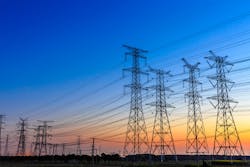The North American bulk power system is one of the most critical infrastructures to society and is relied on 24/7 to maintain high reliability. As electrification expands into every aspect of modern life, the dependence and importance of the electric grid increases.
Protecting the grid’s reliability requires the ability to adapt—it requires a risk-based approach toward mitigating significant and emerging threats. The reliability landscape continues to evolve. The changes we see today are driven by a shift in the resource mix: the retirement of gas, coal and nuclear plants in concert with the introduction of renewable energy resources; and the advent of new technology.
In the face of these changes, NERC—as the Electric Reliability Organization—identifies and quantifies current and emerging reliability challenges and issues and provides risk-informed recommendations for industry, enabling the continued pursuit of improved reliability performance. NERC’s State of Reliability 2018 report looks back over the previous year, analyzing historical risks to the bulk power system with a view toward solving future problems. The report also informs regulators, policymakers, and executives at a high level while providing granular technical details for those interested in the underlying data and detailed analytics.
Resilience has always been a critical element of bulk power system reliability. Because the bulk power system is highly interconnected and interdependent, the system must be designed to achieve agreed-upon levels of performance to minimize the possibility of cascading failures, prevent equipment damage, and ensure continuity of service. Along with the current set of reliability responsibilities, emphasis is also placed on the resilience to respond to extreme events. In 2017, the bulk power system was able maintain reliable operations during two Category 5 events—Hurricanes Harvey and Irma—and the areas affected from storm-related damage recovered in record time when compared to similar storms and conditions from the past, demonstrating improved resilience of North American bulk power system.
NERC recently identified a previously unknown risk to reliability that brought inverter-based resource controls, protection, and performance to the forefront of its reliability efforts. NERC is working with a team of industry inverter experts to mitigate some of the discovered issues and to identify and mitigate any other inverter reliability challenges. For more information on NERC’s inverter work, please see our recent article on the subject.
Other key findings detailed in the State of Reliability 2018 include:
• The bulk power system experienced no loss-of-load due to cyber or physical security events despite continually evolving threats. Nonetheless, grid security, particularly cybersecurity, is an area where NERC and the industry must continually improve defenses as threats continue to rapidly evolve.
• Transmission outages caused by failed protection system equipment, ac substation equipment, or human error all show a decreasing trend for the last five years. These three areas have historically been major causes of transmission outages. Each has trended downward for the last five years; however, these areas remain major contributors to transmission outage severity and will remain areas of focus.
• Frequency response performance trends, while remaining acceptable, are showing varied results by interconnection. Individual Interconnection performance is separated into performance during the arresting period and during the stabilizing period. Three of the four Interconnections trended “improving” during the arresting period, and two of the four trended “improving” during the stabilizing period. No Interconnection experienced frequency response performance below its interconnection frequency response obligation.
• Protection systems misoperation rates, while remaining high priority, have declined for the fifth consecutive year. The overall NERC misoperation rate is lower in 2017 than 2016 (7.1 percent down from 8.3 percent), continuing a five-year trend of declining rates across North America. The three largest causes of misoperations in 2017 remained the same as in 2016: Incorrect Settings/Logic/Design Errors, Relay Failure/Malfunctions and Communication Failures.
In addition to identifying reliability risks, NERC noted key areas for improvement, including resilience, inverter-based resource performance, security, and transmission outages from failures and misoperations. The findings and recommendations at the forefront of NERC’s State of Reliability report were a topic at the FERC Reliability Technical Conference on July 31, 2018.
NERC continuously works to enhance and improve the reliability and resiliency of the bulk power system based on a technical foundation of data and analysis. The sharing of this information through reliability assessments and the ensuing discussions ensure that stakeholders have a broad perspective and are able to develop focused efforts on the aspects that pose the most risk to reliability in the future. The risks presented in the State of Reliability 2018 report must be monitored and mitigated to preserve grid reliability. While this report provides a basis for understanding and prioritizing these risks, it also highlights the interdependencies of these challenges as well as how essential it is that entities across the ERO Enterprise coordinate to ensure effective risk mitigation and a secure and reliable grid.
